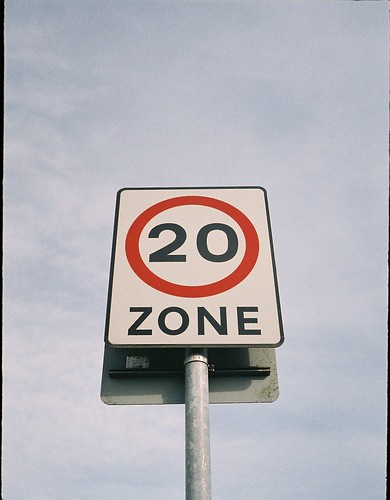You’ve probably gathered I’ve a bit of a soft spot for Olympus compacts and when I stumbled across this on eBay I took a punt on this Half-frame, fixed focus wonder. This is a quick review based on just one roll

It was a risk as the camera was sold by someone who didn’t really know what it was (it was listed just as an old camera), untested and without a cap on (big risk with a selenium metered camera). But it proved worthwhile as I picked up a fully functioning camera for a snip. It shares similar styling and features (cable thread, hotshoe & PC sync) with it’s full frame zone focus cousin the Olympus Trip 35.

The PEN series has had a bit of renaissance recently with the launch of the PEN digital cameras. And although I’m probably not the person to ask Olympus have done a good job with their retro interchangeable lens cameras which ape the PEN F series half frame SLR. But the E series was the P&S aimed at the 60’s and 70’s casual shooter with an eye to saving a bob on developing,
Olympus Pen EE-2 Specs
- Lens: D.Zuiko 28mm 1:3.5
- Focus: Fixed
- Metering: Selenium
- Exposure : Auto
- Aperture : f/3.5-22
- Shutter: 1/40 or 1/200 *
- EV (100) : 8.94- ~17.14 ¹
- Filter-Thread: 43.5mm
- Frame size : 24x18mm
- Production : 1968-1977
* in auto mode. Flash setting at 1/40 only ¹ from manual
Half frame cameras certainly do manage a lot of shots on a roll (72 on a 36 exp !!) and whilst small frame are still bigger than 110 or other sub 35mm film formats. Also before you get you get to sniffy about the frame size remember that serious film movies were and still are by and large shot35mm film with a frame size about the same as our PEN series (explains the nice widescreen feels of the shots)

The PEN E series by and large have the same core feature of half-frame, selenium metering with simple auto exposure in a compact body. Broady the series divides into a zone focus (EES) and fixed focus (EE). However I’m simplifying things here (if you want more info have a look at the subclub’s listing of the series)

The metering & auto exposure system is identical Trip 35 down to the red-flag appearing in the viewfinder in low light. Subclub suggest the camera only works in 1/200 in metering mode but I would disagree as the manual indicates works at 1/40 too and in practice there was no way I could have taken some shots 1/200 with a f/3.8 lens without triggering the red flag. It also makes sense that Olympus used the same metering algorithm on this camera as it did on the trip 35 and the later XA1. It will push towards narrow aperture improving focus until in really low light.
Like the trip you can exploit the flash settings to shot in a quazi- manual mode at 1/40 (although just like with the trip the aperture won’t open up fully to the setting selected if in too bright light- e.g select f/3.8 and try and shoot a sunny scene and the aperture won’t open up much past f/16). The aperture ring doubles as the film speed ring with aperture and ASA on either side (just turn to match either an aperture or ASA to the dot)

With the PEN EE-2 you get a 4 element, 3 group fixed focus zuiko lens. Focus- wise, it is (in good light) pretty sharp at most distances although you’d probably not use it if you want to be a a landscape photographer and make sure you are about 2m plus away. It probable has it true focal point somewhere between 3-6m out but uses Depth of Field to reach it’s purported 1.5m to infinity range. This makes logical sense as it was likely to be used for causal holiday shots of people standing and if you look at most 60-80’s manual focus P&S their focus ring or manual suggest a sweet point for a quick snap shot around the 3-5m mark. Viewfinder is clear but quite small.
I had my processing & scanning done on this roll at ASDA for £2 plus CD costs and they didn’t bat an eye so you can still get processed easily
Mines was a bargain at £6 but you’ll usually pay nearer £20 for a tested one. The original EE lacks the hotshoe but has a dual filter ring (one for lens only and another for lens and meter). The later EE-3 was just an updated version of the EE-2 but was made up to 1986. The EES series is broadly the same but no EE-3. Avoid the ones with the rapid designation as they use the defunct Agfa Rapid cassettes unless you fancy the challenge of converting 35mm film to fit. Mines will need it light seals replaced at some point but that’s it !!
Why Buy ?
- Very Compact
- Classic styling
- Sharp for fixed focus
- double the shots on a roll
Why not ?
- Slightly Pricey (trip half the price and bit better)
- Fixed focus (EES offers zone)
- 43.5mm not that convenient
What I Paid current eBay Pricing
- Paid £6 P&P camera only
- Tested cameras ~£20 or more. Loft finds less
Alternatives
- Pentax Pino 35 : 80’s Full frame fixed focus shooter with flash
- Konica Eye/FED Micron – Japanese rival & it’s FSU copy
- Vivitar Ultra Wide and Slim – Full frame but smaller, still made
Helpful links
- Olympus PEN page at camera-wiki.org
- Manual on Mike Butkus’s site
- Olympus PEN EE series at Subclub.org
- PEN EE-2 Review at lomography
- Discussion on EE-2 Focal point at Amateur Camera Forum

4 thoughts on “Olympus PEN EE-2 : 1st Roll Review”